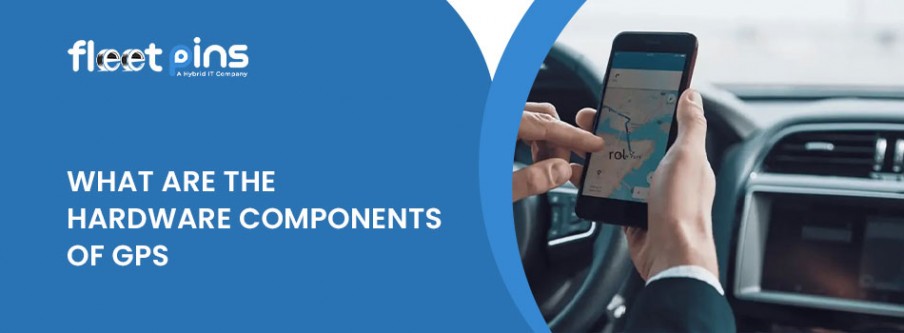
- On 2024-08-16
What Are GPS Hardware Components?
GPS (Global Positioning System) has become an integral part of our daily lives. Whether you're using a smartphone to navigate through a new city, track a fleet of vehicles, or even just find the nearest coffee shop, GPS plays a crucial role. But have you ever wondered how this system works and what hardware components make it all possible? Let’s explore the key hardware components of GPS, how they function together, and the benefits of using GPS tracking hardware.
Essential Components of a GPS System
The effectiveness of a GPS system relies on several critical hardware components. Each of these components works in tandem to provide accurate location data.
GPS Receiver: The Core Component
The GPS receiver is the central component of any GPS system. It receives signals from GPS satellites orbiting the Earth. These receivers are found in various devices, from smartphones to dedicated GPS tracking units. The receiver calculates the precise location by analyzing the time it takes for signals from at least four satellites to reach it.
Antenna: Capturing Satellite Signals
The antenna is responsible for capturing signals from GPS satellites. Typically, it is a passive component, meaning it doesn't require power to function. However, some systems use active antennas that amplify weak signals, enhancing accuracy in challenging environments. Like dense urban areas or heavily wooded regions. The design and placement of the antenna can significantly affect the quality of GPS data.
Processor: The Brain of the System
The processor in a GPS device is like the brain of the system. It interprets the signals received by the antenna and performs the complex calculations needed to determine the precise location. In more advanced systems, the processor can also handle additional tasks like mapping, route planning, and integration with other sensors (e.g., accelerometers and gyroscopes).
Memory: Storing Essential Data
Memory is essential for storing map data, user settings, and past tracking information. In some GPS devices, especially those used for navigation, memory can store detailed maps of entire regions or countries. This allows the GPS system to function even without an active internet connection.
Power Supply: Fueling the GPS System
GPS hardware components need a reliable power source to operate continuously. In portable devices, this is typically a battery, while in vehicle-mounted or fixed units, the power may come from the vehicle’s electrical system or an external power source. The efficiency of the power supply affects how long the device can operate without needing a recharge or replacement.
Communication Interface: Keeping You Connected
The communication interface allows the GPS device to send and receive data. In tracking systems, this could involve transmitting location data to a central server via cellular networks, Bluetooth, or Wi-Fi. Some advanced systems might also support real-time communication for live tracking and updates.
You May Also Read: 10 Essential Features to Look for in a GPS Tracking Unit
How Does GPS Work?
The process of determining a location with GPS involves several steps:
Signal Transmission
GPS satellites continuously broadcast signals that contain their location and the current time. These signals travel at the speed of light and are picked up by GPS receivers on Earth.
Signal Reception
The GPS receiver captures signals from multiple satellites (at least four) using its antenna. The more satellites a receiver can "see," the more accurate the location calculation will be.
Distance Calculation
The receiver calculates the distance to each satellite based on the time it took for the signals to arrive. By knowing the exact location of the satellites and the distance to each, the receiver can triangulate its own position on Earth.
Position Calculation
Using the data from multiple satellites, the processor in the GPS device calculates the precise location in terms of latitude, longitude, and altitude. This data can then be displayed on a map or used for other tracking purposes.
You May Also Read: How GPS Vehicle Tracking Can Transform Fleet Management?
Advantages of Utilizing GPS Tracking Hardware
GPS tracking hardware offers numerous benefits across various industries and applications:
- Improved Efficiency
- Real-Time Tracking
- Enhanced Safety
- Theft Recovery
- Compliance and Reporting
You May Also Read: Top Benefits of Implementing GPS Trackers in Fleet Operations
Fleet Pins: Leveraging Advanced GPS Technology
Fleet Pins GPS Tracker is an example of a company that leverages GPS tracking hardware to offer comprehensive fleet management solutions. Our GPS devices are equipped with all the essential hardware components, including high-sensitivity receivers, robust antennas, and reliable communication interfaces.
Fleet Pins systems allow businesses to monitor their fleets in real time, optimize routes, and ensure the safety of their vehicles and drivers. By integrating advanced GPS hardware with user-friendly software, Fleet Pins provides a powerful tool. These solutions improve efficiency and reduce operational costs.
Conclusion
Understanding the hardware components of GPS is essential for appreciating how this technology works and the benefits it offers. From the GPS receiver to the communication interface, each component plays a critical role. Tracking units deliver accurate and reliable location data. Whether you're managing a fleet of vehicles or simply navigating to a new destination, GPS hardware is an invaluable tool that enhances efficiency, safety, and convenience. We can expect GPS systems to become even more sophisticated, offering new features and capabilities that will further transform the way we live and work.




